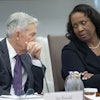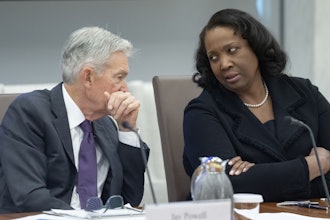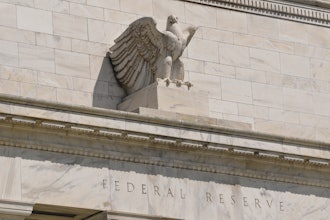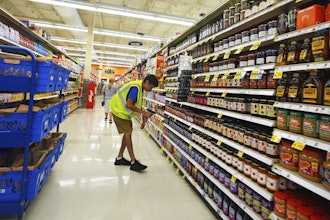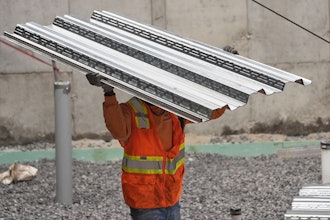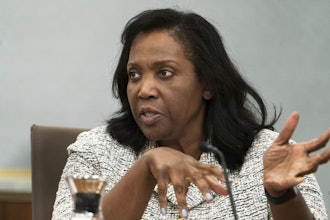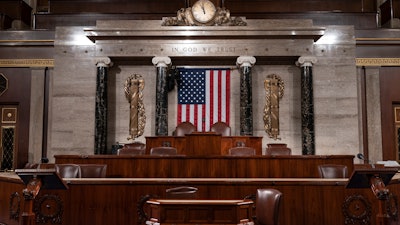
WASHINGTON (AP) — A portrait of a robust U.S. economy is sure to take center stage Tuesday night when President Donald Trump gives his third State of the Union address. It is an economy that has proved solid and durable, yet hasn't fulfilled many of Trump's promises.
Nine months before the election, the economy keeps growing steadily if only modestly. Unemployment is at a half-century low. And consumers, the lifeblood of the U.S. economy, continue to spend. Average pay is rising faster than when Trump took office three years ago, with the largest percentage gains now going to lower-wage workers. Some research has found that this trend, which began in 2015 before Trump's election, partly reflects higher state minimum wages.
Economists warn, though, that the U.S. expansion, now in its record-long 11th year, faces an array of threats. Most immediately, China's viral outbreak has paralyzed business with the world's second-largest economy. Starbucks and Apple have closed stores in China, airlines have canceled flights and companies like General Motors have halted production there.
All of that could shave one-half percentage point off annual growth in the first quarter, Goldman Sachs economists forecast, though they expect the slowdown to be offset by a rebound in the second quarter. Boeing's decision to halt production of its 737 MAX should also weaken growth in the first six months of the year, economists say.
America's manufacturing sector is struggling, a reflection of Trump's trade conflicts. High corporate debt levels have sparked concerns. Some analysts also worry that the Federal Reserve's ultra-low interest rates have helped feed risky bubbles in stocks or other assets.
And leading Democratic presidential candidates, especially Sens. Bernie Sanders and Elizabeth Warren, have built their campaigns to unseat Trump around the message that the economy remains rife with inequality, with many workers struggling to afford college, housing or health care.
Trump is unlikely on Tuesday night to let any such doubts temper his standard message that under his stewardship, the economy is thriving, unemployment is falling, the stock market is roaring and that the best days are still ahead.
“I’m proud to declare that the United States is in the midst of an economic boom the likes of which the world has never seen before,” Trump said last month in Davos, Switzerland. “America is thriving, America is flourishing, and yes, America is winning again like never before.”
Yet what Trump calls an unprecedented boom is, by many measures, not all that different from the solid economy he inherited from President Barack Obama. Economic growth was 2.3% in 2019, matching the average pace since the Great Recession ended a decade ago in the first year of Obama's eight-year presidency.
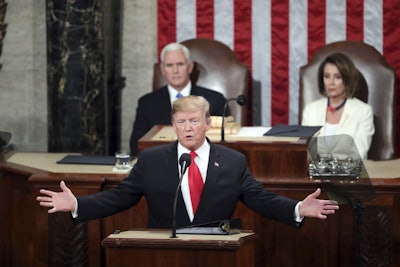 In this Feb. 5, 2019 file photo, President Donald Trump delivers his State of the Union address to a joint session of Congress on Capitol Hill in Washington, as Vice President Mike Pence and Speaker of the House Nancy Pelosi watch.AP Photo/Andrew Harnik, File
In this Feb. 5, 2019 file photo, President Donald Trump delivers his State of the Union address to a joint session of Congress on Capitol Hill in Washington, as Vice President Mike Pence and Speaker of the House Nancy Pelosi watch.AP Photo/Andrew Harnik, File
During the 2016 campaign, Trump boasted that his tax cut plan would boost annual growth to 4% a year — a brisk pace not seen since the late 1990's. Instead, Trump, along with Obama, is one of two presidents since World War II not to have presided over a year of at least 3% growth. And few economists think the economy will hit that target this year.
Most analysts do think Trump's tax plan helped accelerate growth, just not the way he had promised.
“The Trump tax cuts were a sugar high that juiced the economy temporarily,” said Ryan Sweet, an economist at Moody's Analytics.
It put more money in Americans' pockets, boosting consumer spending. The economy grew 2.9% in 2018, a healthy pace though the same as in 2015, the year before Trump's election.
The administration had vowed, though, that the tax cuts would do more than just encourage Americans to shop more. The president's top economists had said the tax cuts would accelerate corporate investment in machinery, computers and plants and office towers. All the new equipment would make workers more efficient, the argument went, thereby boosting productivity — the amount of output for each hour worked.
Greater productivity is one of the two main drivers of growth; the other is an increase in the number of U.S. workers. Both have slowed in the past decade.
Most economists partly blame Trump's trade wars, particularly with China. The trade conflicts have left American companies much less certain about the economic outlook and reluctant to expand and invest. Business investment shrank in the final three quarters of last year.
Nor have Trump's business tax cuts and deregulation made the economy more dynamic. The growth of new companies has remained anemic since the 2008 downturn. Larger businesses continue to dominate many industries, from technology to retail to finance.
All this is occurring despite significant stimulus. Trump has assailed Fed Chairman Jerome Powell for not cutting rates more, though the Fed's benchmark rate is now in a range of just 1.5% to 1.75%, a very low level historically and one that is considered stimulative.
And increased federal spending has also helped support the economy. The Congressional Budget Office last week projected that the government's deficit will top $1 trillion annually for the next decade.
“The accelerator is on the floor, but the vehicle is moving surprisingly slowly," Larry Summers, Treasury Secretary under President Bill Clinton and a top economic adviser to Obama, said in early January.
Trump has also recently highlighted what he calls a “blue collar boom,” pointing to solid wage gains for lower-paid workers and healthy hiring in construction and manufacturing. But manufacturing jobs barely grew last year as factories hunkered down in the midst of the trade wars. And since Trump's inauguration, manufacturing jobs have grown more slowly than employment overall has.
Ernie Goss, an economics professor at Creighton University in Nebraska, said the Midwest's job growth has amounted to only about three-quarters of the national pace since Trump took office. Farmers have also suffered from the trade war, he said, as retaliatory tariffs by China have clobbered exports of soybeans and other commodities. That, in turn, has hurt manufacturers of farm equipment, including Deere and Caterpillar.
“Everyone says the economy is going great guns, but that is everything except agriculture and manufacturing,” Goss said.
What's more, most campaign battleground states in the Midwest, such as Michigan, Pennsylvania, Ohio and Wisconsin, have lost factory jobs in the past year. Most manufacturing job growth under Trump's presidency has occurred in Southern and Western states, said Dean Baker, senior economist at the liberal Center for Economic and Policy Research. With fewer union members in those states, those factory jobs generally pay less. In fact, manufacturing jobs, once a bulwark of the postwar middle class, now pay less on average than private-sector jobs overall, Baker said.
Still, despite modest growth, the record economic expansion has endured under Trump. There is also evidence that its durability has, in recent years, finally started to benefit a broader swath of Americans.
More people have come off the sidelines and found jobs, defying most economists' predictions. The proportion of Americans in their prime working years — ages 25 through 54 — who are employed is now higher than before the Great Recession.
And last year, wages rose nearly 5% for the poorest one-fourth of Americans, far more than for the richest fourth, whose pay rose just 3%, according to the Federal Reserve Bank of Atlanta. Still, richer Americans hold a far greater portion of the nation's wealth, with the top 10% owning nearly 85% of the value of all stocks.
The moderate pace of growth has meant that so far, the economy isn't showing evident signs of excess akin to the housing bubble that led to the 2008 financial meltdown.
“This expansion has been slow and steady, but it could run for a few more years,” Sweet said. “There's no reason that it needs to die. Sometimes slow and steady does win the race."


